Written by: Kelly Waffle
What a difference a year makes. In the Hinge Research Institute’s High Growth Study 2021, Technology and Software Edition, the most pressing business challenges for surveyed firms were 1) “Unpredictability in the marketplace” and 2) “Changes in how buyers buy your services.” Responses seem to be coming from a re-active and blind posture.
As we look at our new High Growth Study 2022, Technology and Software Edition, the business challenges have changed significantly with these firms. We had 178 technology and software firms participate in this study with more than $175 billion in combined revenue and 360 thousand employees. All firm sizes were represented with mid-size firms having the largest survey participation.

The study also had good worldwide representation. While more than 60% of the responses represented United States businesses, there was strong representation from all points of the globe including Europe (36.8%), Asia (34.8%), and Australia & Oceania (21.1%)—with South America being the lowest at 15.7%.
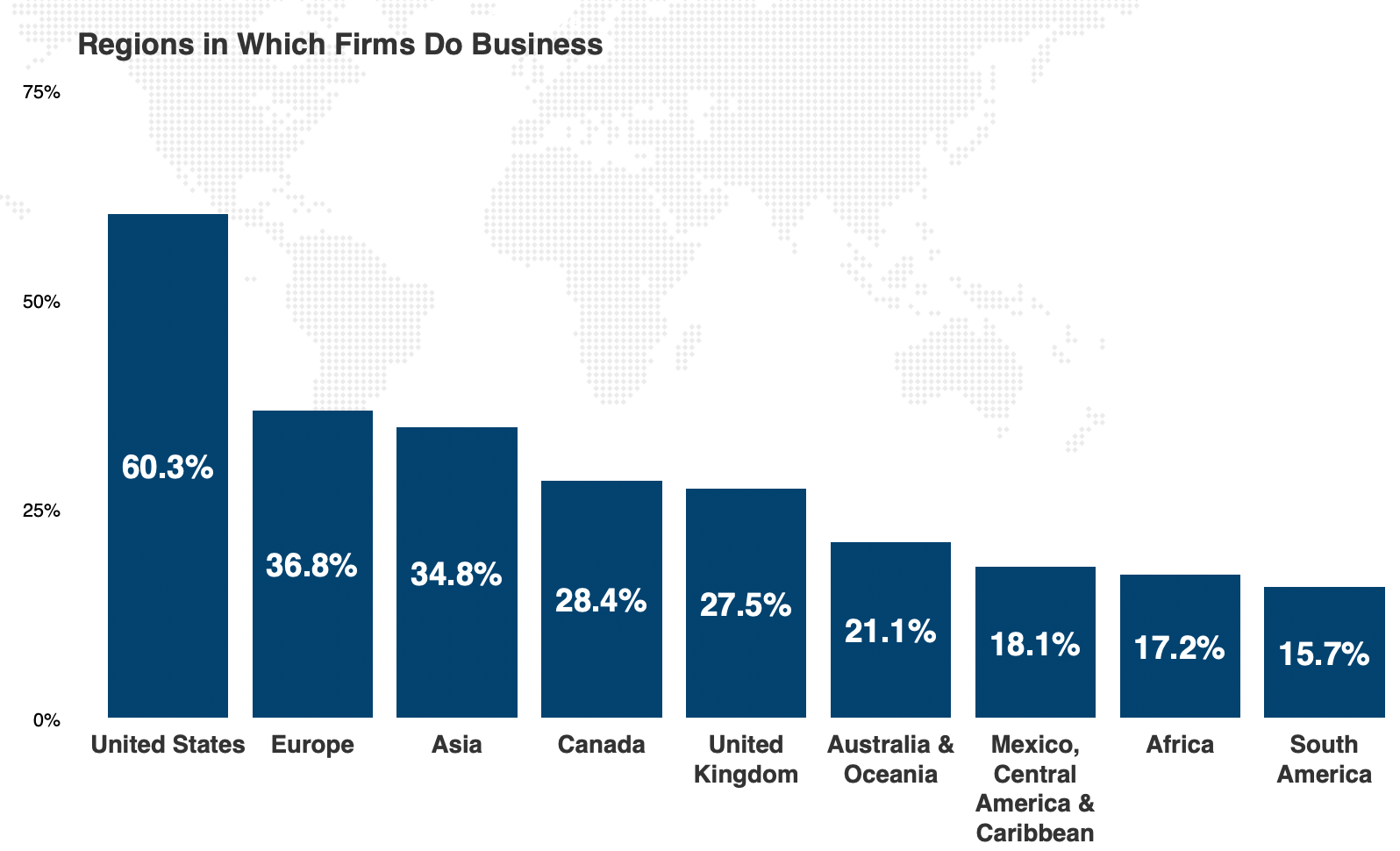
Confidence and Stability Become the New Normal.
“Unpredictability in the marketplace” has been replaced with “Increased competition from larger competitors” as the #1 challenge. In fact, unpredictability in the marketplace drops all the way to seventh place. The #2 challenge has changed as well. It is now “A shortage of top talent.” This year, the responses seem to be coming from a pro-active or enlightened position. That is because technology and software firms, especially the high growth firms, have “cracked the code” on growth.
The new normal for technology and software firms moves away from fear and unpredictability and embraces confidence and stability. Technology buyers see the benefits and impact that technology can provide to their business growth and are willing to make a significant investment in it. So much so that the technology and software industry had the highest median growth of any of the six professional services firms that we follow in the study.

Key Findings
Technology and software firms have adapted to the new ways that their buyers buy. They realize that today’s buyers are leveraging digital assets such as email, websites, search engines, social media, and webinars to learn more about products and services and help them distinguish one vendor from another.
In years past, much of the education would have occurred at trade shows, conferences, or special events. Technology and software firms have invested the time and resources to ensure that they are getting the amount of leads they need to grow their businesses. In fact, technology and software firms lead all professional services industries in the proportion of leads generated by digital sources. While technology and software firms lead the way, they still have plenty of room for optimization: converting those leads into opportunities and, ultimately, revenue. Greater digital maturity and better reporting will put technology and software firms in a better position to generate more visibility, growth, and profits.
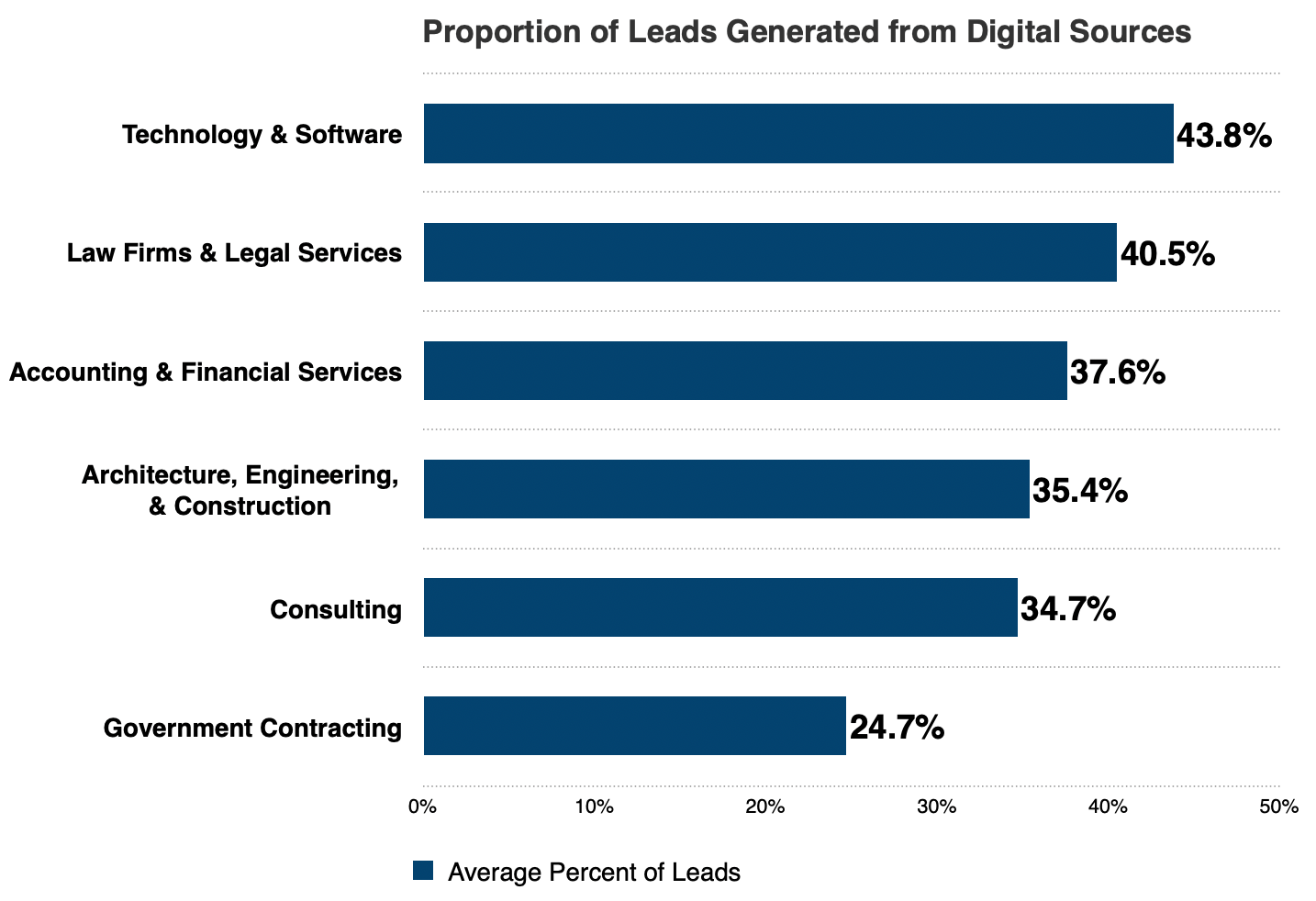
What Can You Learn (and Copy) From the High Growth Technology and Software Firms?
As you can see, technology and software firms are doing well. But high growth technology and software firms are doing very well. High growth firms are defined as having a compound annual growth of 20% or greater over a three-year assessment period. These are the firms that we study, and these are the firms that you should mimic. Here are just a couple of reasons why you should try to apply what these high growth firms are doing:
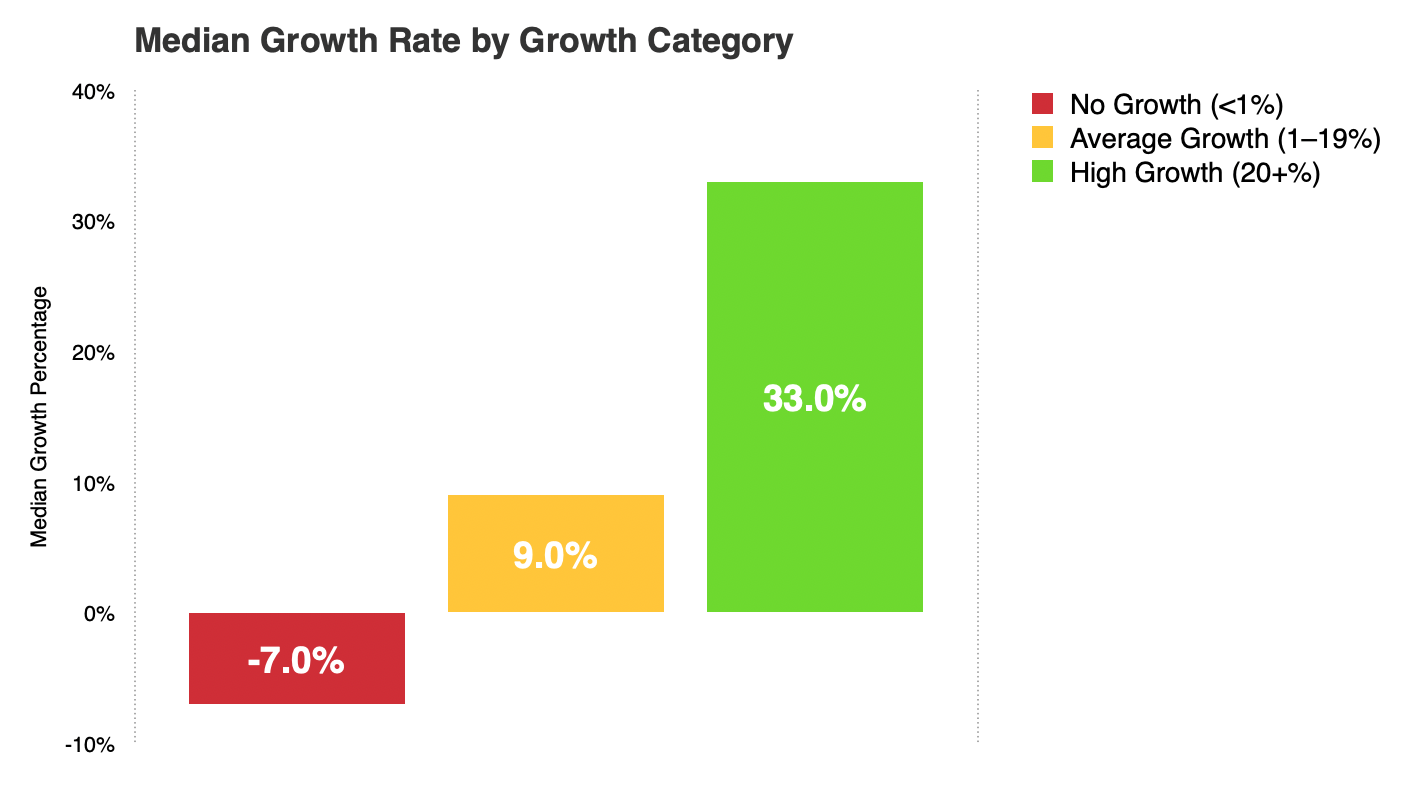
In the last year, the high growth technology and software firms grew significantly more than average growth firms—and dramatically more than no growth firms.
Not only did they grow more than average growth or no growth firms, they were also a lot more profitable. Just take a look at the right side of the chart below. High growth technology and software firms enjoyed high profit status (25+%) in 44% of their organizations compared to only 30% of no growth firms. A common misperception that rapid growth diminishes profitability does not seem to be the case.
This is fairly compelling evidence that the high growth firms we study have uncovered the secrets or cracked the code to generating more visibility, leads, revenue, and profitability. What can you learn from them? What should you change in your strategies and processes? Are there areas where you should re-prioritize and invest more with time, money, and resources?
Each year these firms do a few things differently than average growth or no growth firms that pay off in greater growth. In the High Growth Study 2022: Technology & Software Edition, we saw that these high growth firms leveraged a key advantage in four areas: Talent, Technology, Marketing, and Strategy.
KEY ADVANTAGE 1: TALENT
Most of us have been impacted by the global human resources trend economists call, “The Great Resignation.” Employees are resigning at record numbers—causing gaps in headcount and skills. The disruption can affect sales projections, product/service development, client support, ability to compete, and more.
High growth technology and software firms navigate around this potential disruption by using outside agencies, firms, and contractors. This makes sense as in many cases the projects are for a fixed period of time and do not require full-time employment to deliver them. High growth firms also are leveraging outside resources that may have more experience and expertise than any full-time employee they hire. Some of the most popular services that high growth firms seek outside help on include: marketing materials development, website improvements, graphic design, video production, and search engine optimization. All these services work to showcase content and thereby help to generate more visibility and leads.
Could you be using more outside expertise to make sure that key projects are finished, and your firm has the chance to grow a little more?
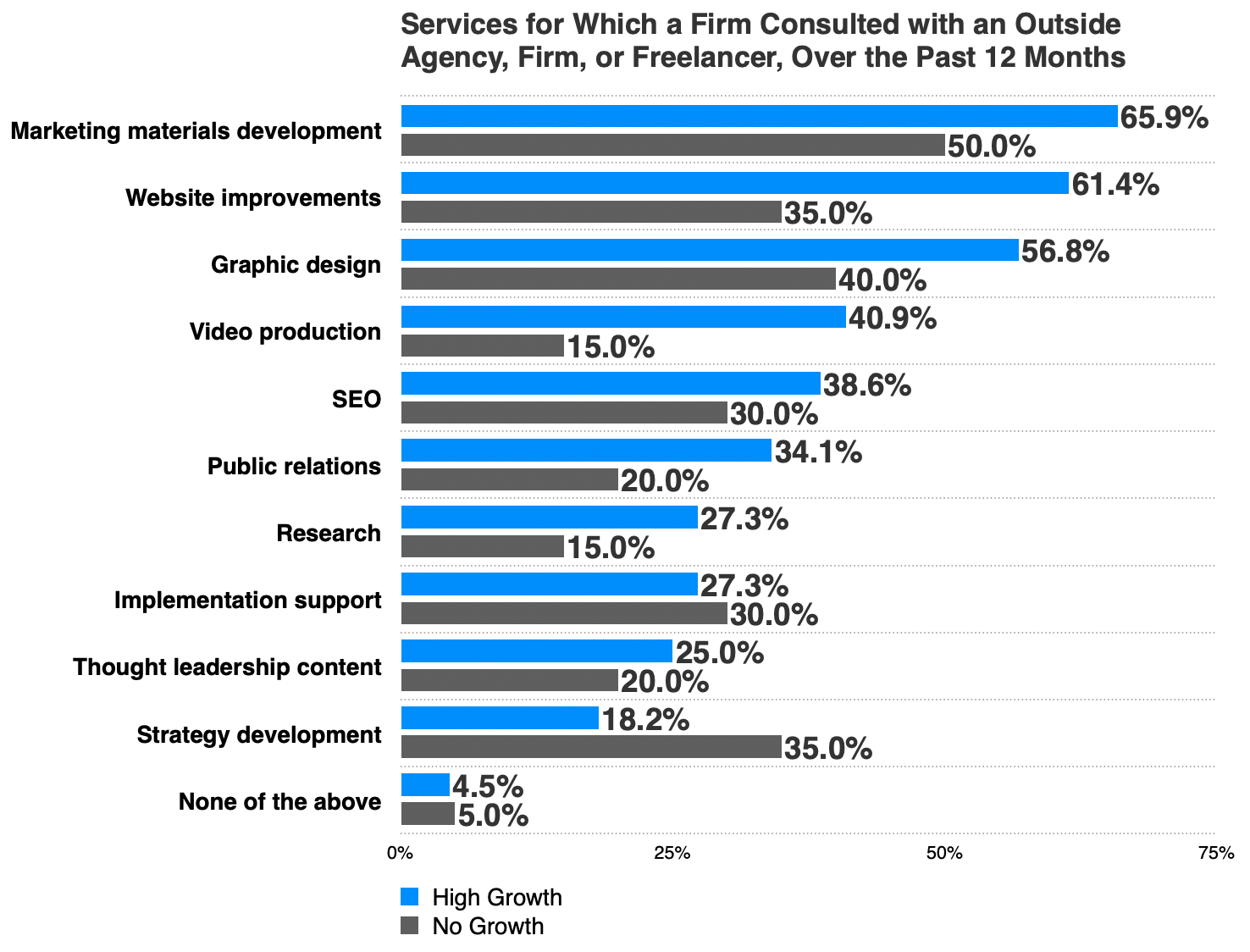
KEY ADVANTAGE 2: TECHNOLOGY
We have seen over the last few years the move to using more technology. What we are now seeing is more use of more technology. Overall, technology and software firms have increased the number of marketing techniques they use by an impressive 22%. High growth firms have gone even further by using that technology noticeably more than no growth firms. Sometimes the difference is dramatic. For example, high growth technology and software firms use web conferencing tools 86.7% of the time compared to 60% for no growth firms. Customer Relationship Management (CRM) platforms are leveraged by high growth firms 82% of the time while no growth firms use them only 55%. This gap is really magnified when you look at email marketing usage: high growth firms (66.7%) no growth firms (35%).
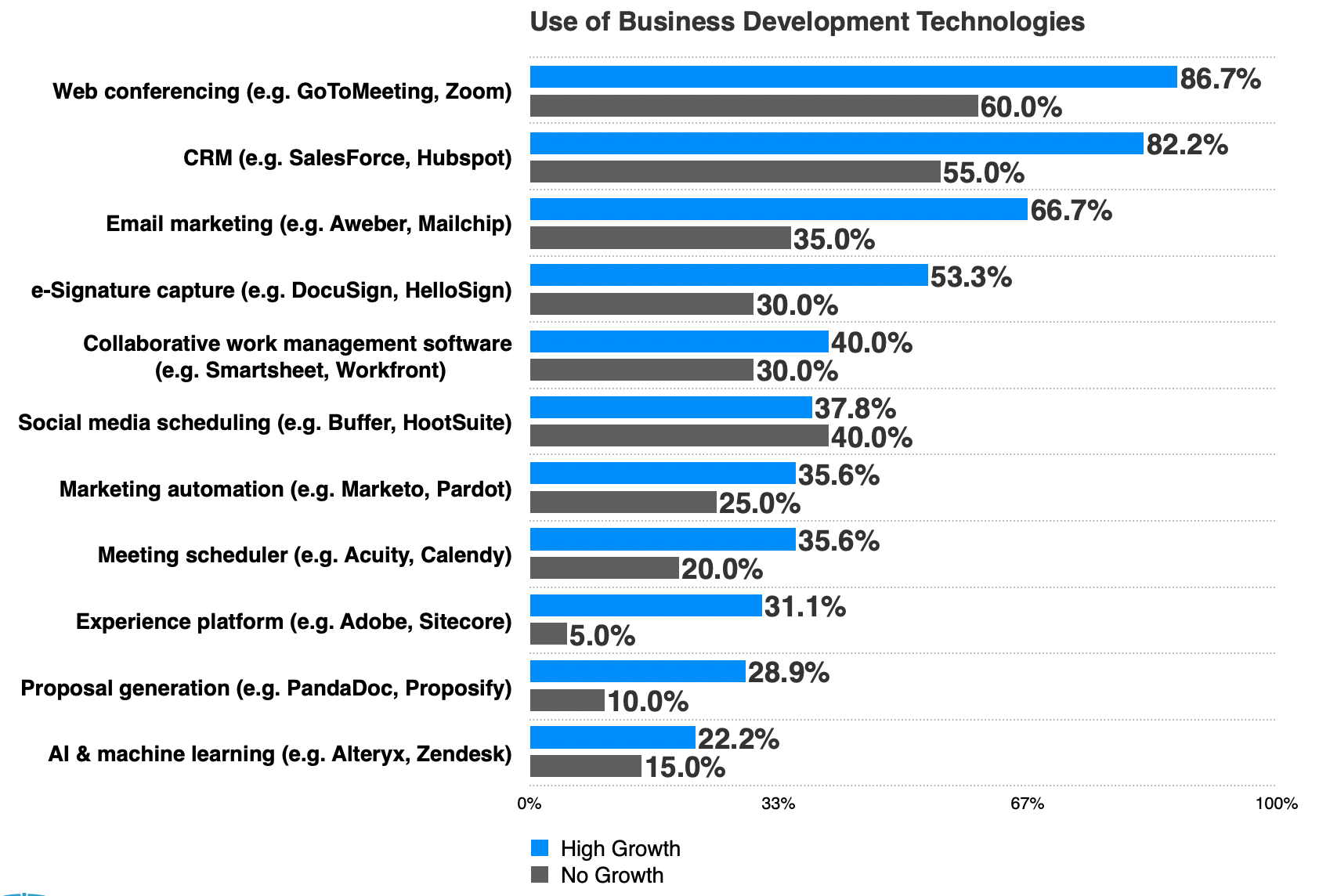
High growth firms are also doing something else differently when it comes to technology. They are investing time and resources to build maturity. We use an Automation Maturity Scale within this study and across all technologies, the technology maturity of the high growth firms was higher. This maturity leads to more sophisticated processes and moves high growth firms beyond implementation and usage to reporting and analytics. They are moving closer to optimization which will only help with budgeting, growth, and profitability.
Take a look at the chart below. High growth firms use every marketing and business development tracking technique significantly more than average growth or no growth firms. This is a key advantage to growth. By having processes in place to report and analyze performance, these high growth firms are positioned to adapt and improve. They are making more informed decisions—whether that means changing programs or investing more in effective programs. This level of maturity helps all aspects of a firm’s business. The bottom line is more revenue and more profitability.

KEY ADVANTAGE 3: MARKETING
Interestingly, marketing investment is slightly lower among high growth firms compared to no growth firm – 13% versus 15%. Yet the high growth firms achieved better results. They significantly outperformed their peers. Why? How?
The high growth firms have figured out how to get more from their marketing and business development dollars. As we mentioned earlier, the high growth firms are more technologically and digitally mature and are using metrics and analytics to become more effective and efficient.
As the following charts shows, the high growth firms are also using more marketing techniques. They are also using these marketing techniques more frequently and more skillfully to deliver superior growth results.
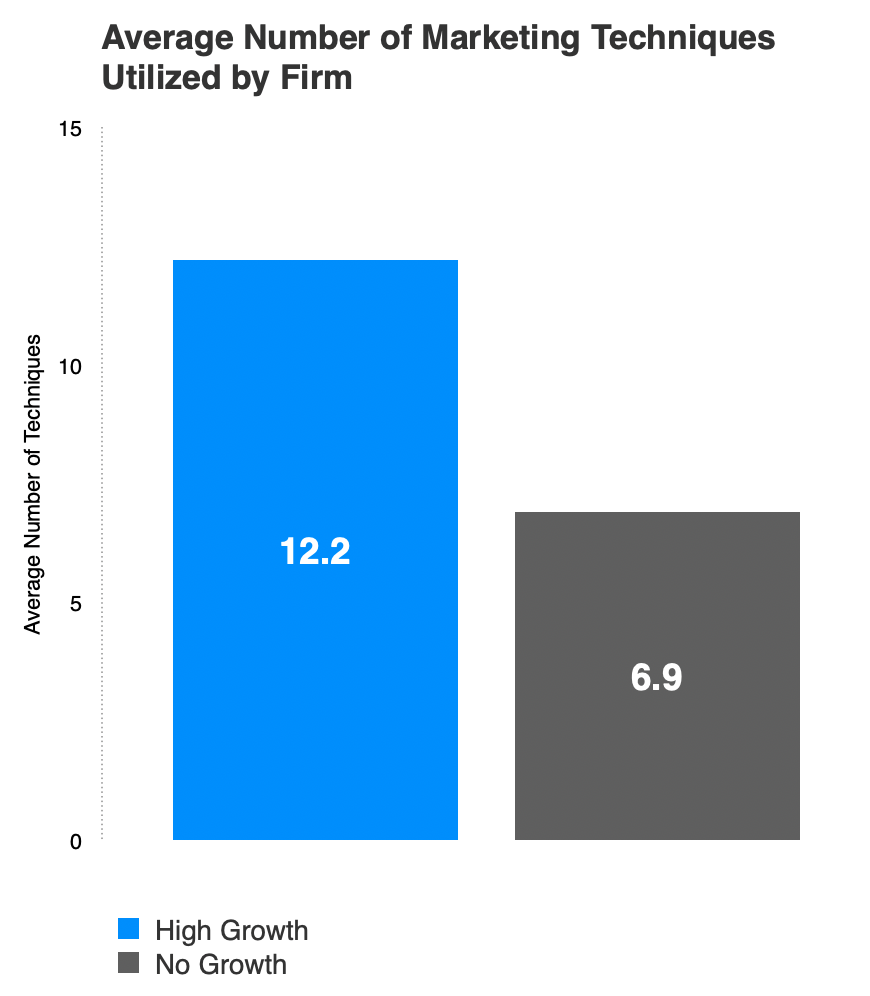
One key finding we found was in the marketing priorities that high growth and no growth firms had. As shown in the chart below, while the first two marketing priorities—“Creating content” and “Brand differentiation”—rated high for both high growth and no growth firms, the other four priorities had noticeable gaps in ratings. “Website performance” was a key marketing priority for twice as many high growth firms versus no growth firms (20.5% versus 10%). The gap was even larger for “Influencer marketing. Three times as many high growth firms saw it as a marketing priority as compared to no growth firms (15.9% versus 5%). Maybe now is the time to compare your current marketing priorities to those of the high growth firms and consider adjust your strategy accordingly.
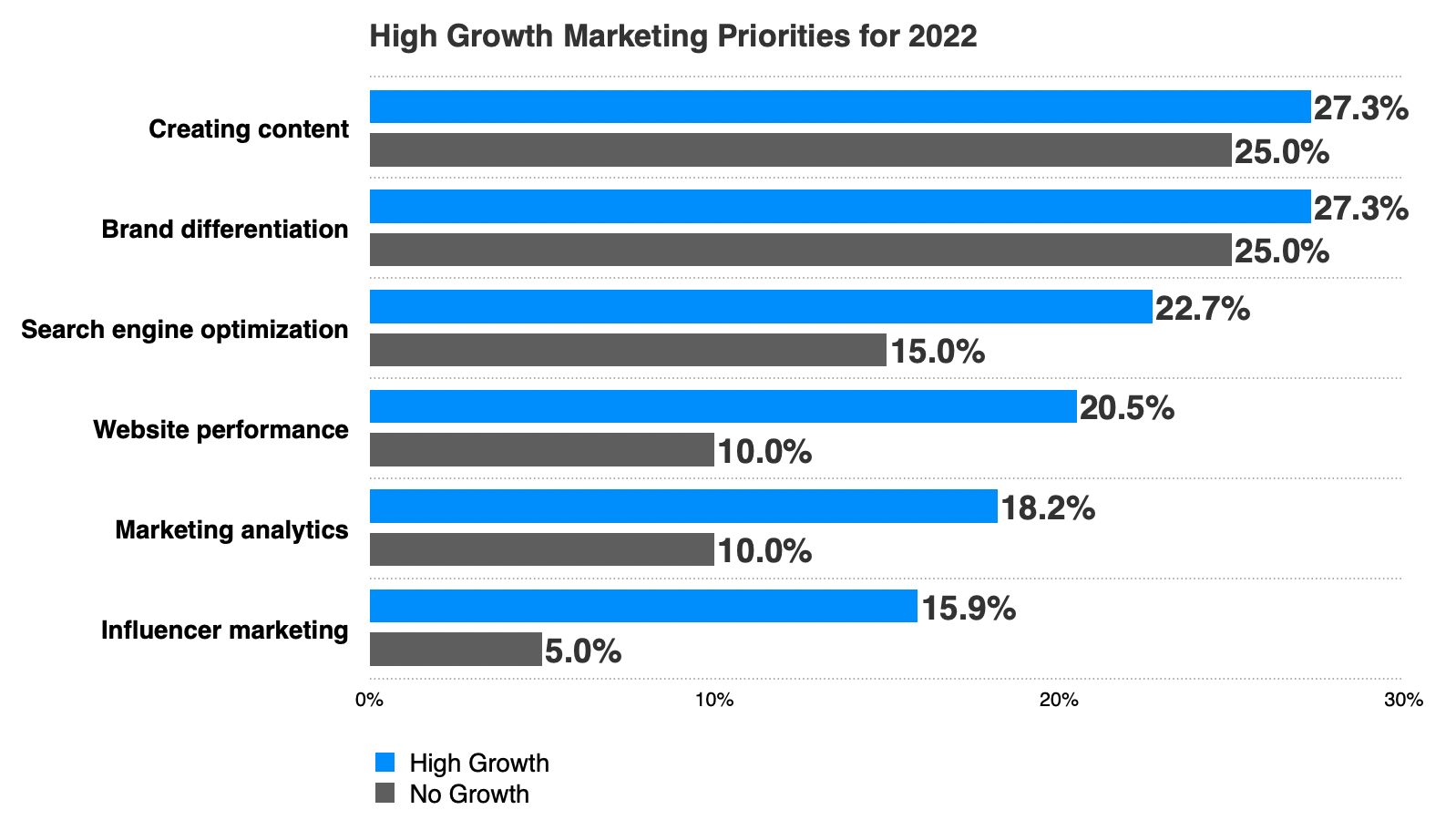
KEY ADVANTAGE 4: STRATEGY
When many think of a firm’s growth, they often think of organic growth. While organic growth is an essential component of a firm’s growth, it is not always the only component—especially when it comes to technology and software firms. In fact, with high growth technology and software firms, merger and acquisition growth made up almost one-fourth of total growth. Our research uncovered that more than 53% of the high growth firms were part of a merger or acquisition.
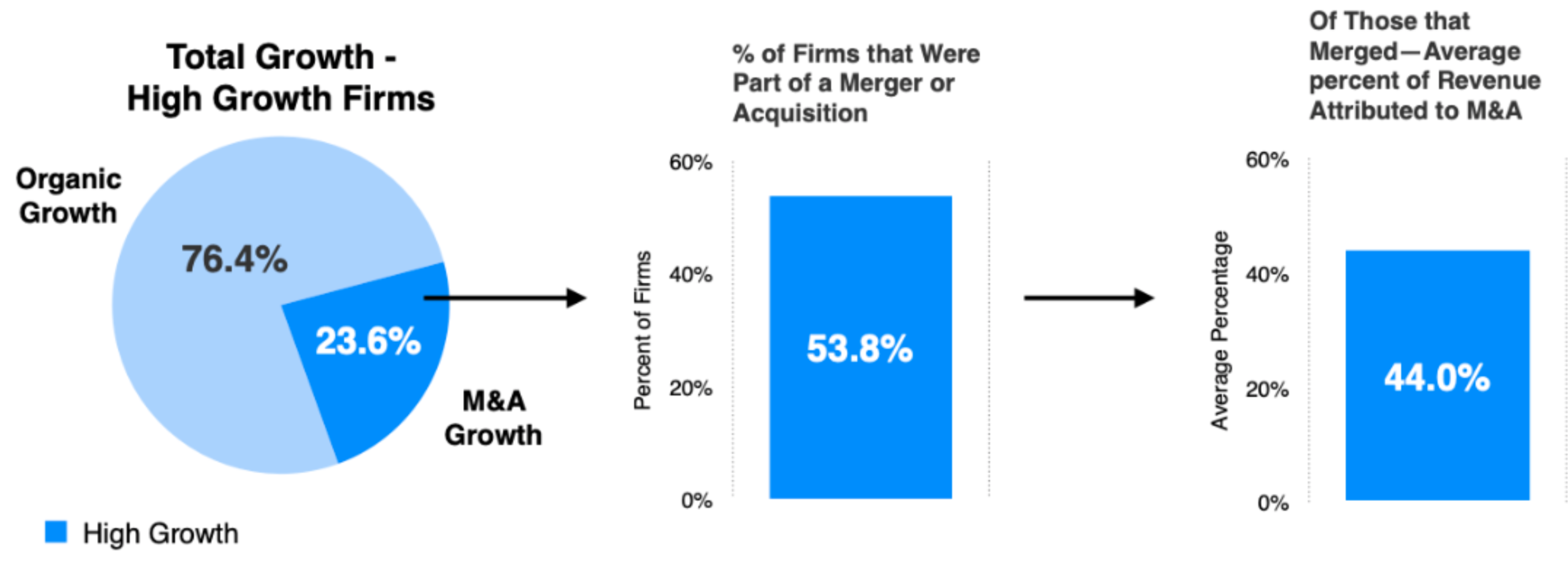
The research also shows that mid-size ($5-$49.9 million in annual revenue) firms are most likely to be involved in a merger or acquisition. If you are in a senior leadership role at a mid-size technology or software firm, you will want to have a growth plan that considers a merger or acquisition. Depending on your firm’s business performance, you should have contingencies to merge, to acquire, or to be acquired. Perform some due diligence now and prepare so that you are in a stronger position to negotiate in the future. This is where a pro-active and agile strategy will help your firm grow.
Want to read the full report? Purchase access here
A Few Final Thoughts
If you want your firm to grow more in the next 12 months, keep in mind that the battle for highly skilled talent isn’t slowing down high growth technology and software firms. Follow their lead.
Technology is driving growth and profitability. From core business processes to marketing and business development functions, high growth firms are leveraging their higher levels of technological maturity and making greater use of multiple technologies to move toward optimizing their revenue-generating performance and achieve superior results.
At every stage of the journey, marketing really matters. The high growth firms are again finding higher levels of success while spending slightly less than their no growth peers. They do it with better execution—which results in greater impact with the same marketing techniques.
There are different ways to get to growth. Mergers and acquisitions can play a key role in your firm’s growth and success. Another way to approach growth is mindset. No growth firms are concerned about unpredictability in the marketplace. High growth firms are concerned about increased competition from new firms and competitors. The new normal for high growth firms is founded on stability and predictability.
Obviously, this blog was not meant to cover the High Growth Study 2022: Technology & Software Edition in its entirety. It is supposed to act as an executive summary and guide you through some of the key data, findings, and insights. If you want to more about topics such as “The top 10 most impactful marketing techniques for high growth technology and software firms” or “The benefits of higher SEO maturity within technology and software firms,” you will want to purchase a copy of the full study.
For companies that sell to technology and software firms, you may want to consider purchasing a 12-month license of the full study from the Hinge Research Institute so that you can use part or all of the study as premium content in email campaigns, webinars, social media postings, websites, sales collateral, business development presentations, and more.
Hopefully your firm can apply a lot of the key difference techniques that the high growth firms are leveraging when it comes to talent, technology, marketing, and strategy and next year we can include you as a high growth firm in this study. Carpe diem!
Related: The Digital Transformation Imperative: A Look at How Far Professional Services Firms Have Come


